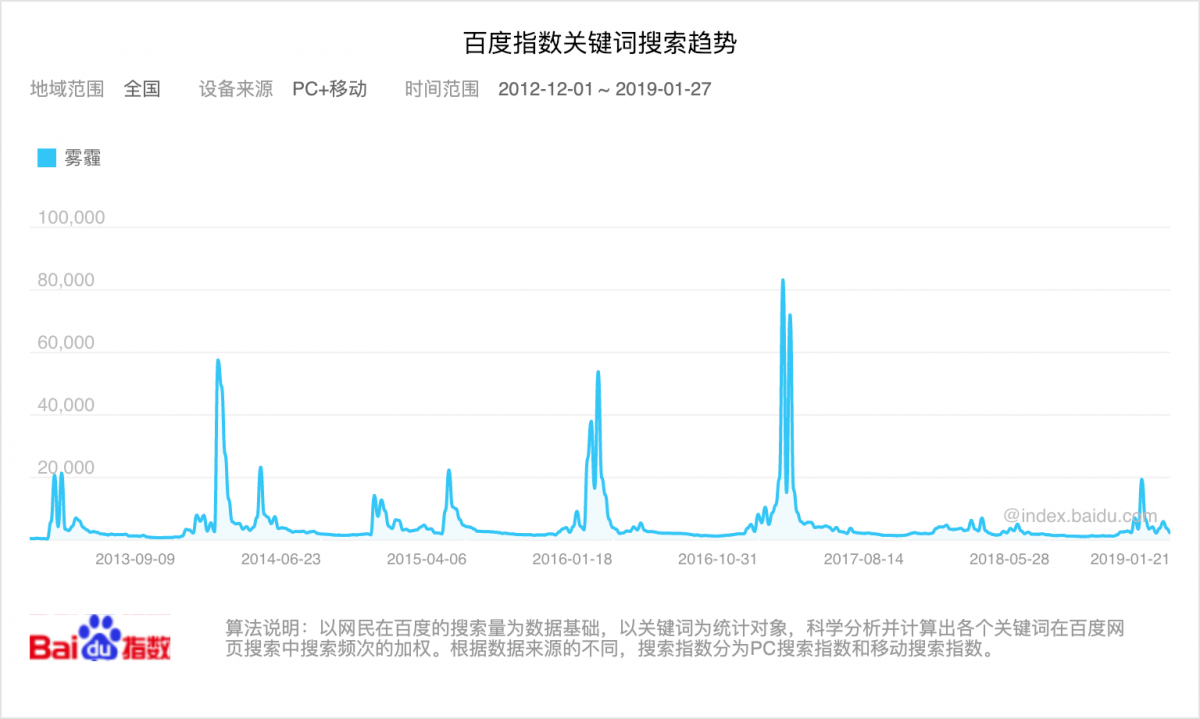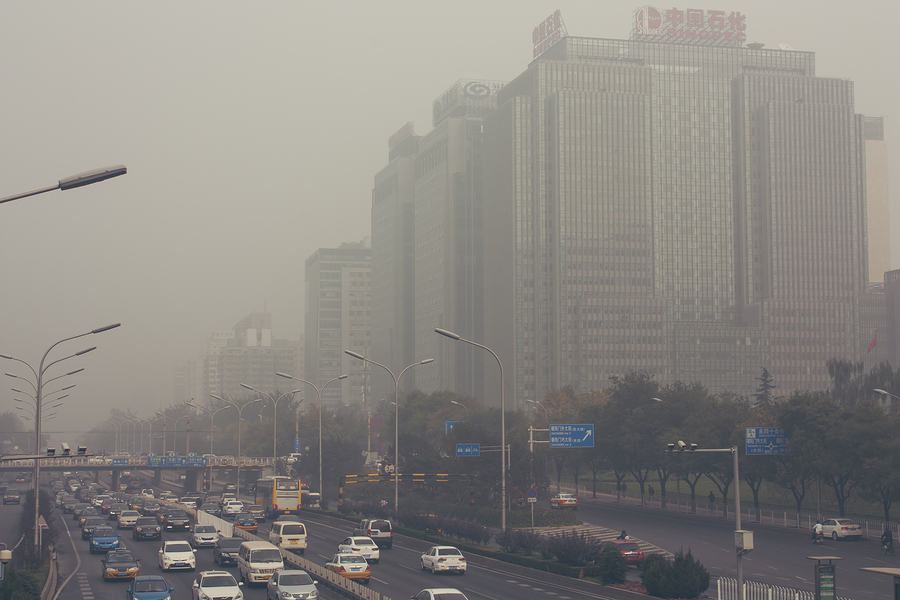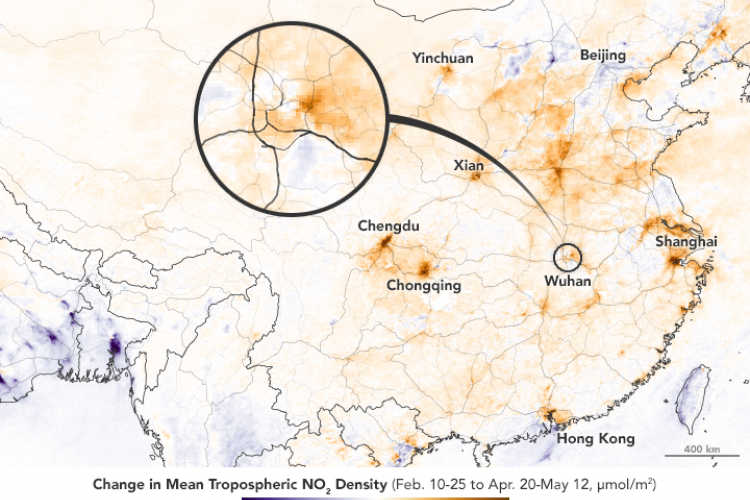What Social Media Says About China’s War on Air Pollution
How does the average Chinese person feel about air quality today? It’s a question that seems even more pressing nowadays considering that in 2018, China appeared to slow down in its aggressive, government-led “war against air pollution.”
Previously, online popular opinion had kicked off a years-long struggle to control one of the most visible environmental issues spawned by China’s rapid industrialization. Air pollution has been an area where prominent netizens’ feelings have actively shaped official response; as environmental progress flags due to various factors, social media may once again come into play.
Winning the war
Despite a temporary setback, China has made significant progress in cutting down on smog. In March 2018, the University of Chicago’s Energy Policy Institute released a report titled, “Is China winning the war against air pollution?”
The title reflected tentative hope among environmental analysts. After four years of battle, 2017 brought improvements of between 21-42 percent in the air quality of China’s biggest cities – the US, by contrast, had taken 12 years to achieve similar results. The figures measured the concentration of harmful PM 2.5 particles (airborne particulate matter measuring 2.5 micrometers or less in diameter), and mostly met or surpassed goals set in a 2013 National Air Quality Action Plan. While still falling short of the World Health Organization’s recommendations, the improved air added an average 2.4 years to the life expectancy of citizens.
In the process of hitting ambitious 2017 targets, however, some people were literally left out in the cold. That winter, when factories shut down, various residents, businesses, and schools were cut off from coal-fueled heating.
On the Chinese microblogging platform Weibo, the hashtag “countryside children without heating” received around 8 million views in the winter of 2017. Accompanied by a photo of bundled-up kids studying outdoors, the story prompted an outpouring of sympathy, as well as pressure on local officials from the national government to remedy the situation.

When it reconvened in March 2018, the National People’s Congress created what appeared to be a less stringent plan for improving air quality. There would be no new binding targets for PM 2.5 reduction; moreover, instead of a blanket ban on coal-powered manufacturing, local governments would decide whether to close factories down during the winter. As of last November, China Dialogue reports, pollution levels had increased 10 percent from the previous year.
During a press conference last October, Liu Youbin, a spokesman for China’s Ministry of Ecology and Environment, denied that the less ambitious targets meant the country was loosening its pollution restrictions. Instead, Liu said, cooler temperatures and rain had accounted for one-third of 2017’s improvement in air quality. To maintain similar progress amid less favorable weather in 2018, the government still aimed to reduce pollution levels by “at least 11 percent” (in Chinese).
Visible progress
Whether the lag is due to weather or other reasons, more visible progress may be needed to keep urban residents happy. Recent studies show that airborne pollution not only harms residents’ health, but also dampens their mood. And as history proves, the Chinese government’s fight against smog has tended to dovetail with online surges in public concern.
In 2011, influential Weibo bloggers voiced alarm when measurements of the especially harmful type of pollutant known as PM 2.5 soared, according to the Twitter feed of the US Embassy in Beijing. At that time, China’s Environmental Protection Bureau did not collect or release such figures for the nation’s capital, much less across the country.
By early next year, however, the Bureau had started reporting PM 2.5 levels in Beijing, and in March, the measure was incorporated into nationwide air quality standards. At that time, the government announced it would begin monitoring levels of the pollutant in provincial capitals and dense urban hubs, expanding to cities across China by 2015.
In 2013, Beijing’s poor air quality once again made headlines, with foreign media dubbing the crisis an “airpocalypse.” Netizen concern ballooned accordingly: From December 2012 to 2013, researchers found, Baidu searches for “haze” soared from 212 times per day to 11,193. The same year, China set its ambitious National Air Quality Action Plan into motion.

Concern over dips in air quality can also take more subtle forms. In a recently published study, a team of MIT professors discovered a correlation between air pollution levels and the expressed emotions of Weibo users.
The group used AI algorithms to analyze the happiness levels of 210 million geotagged posts from March to November 2014. Even after eliminating microblogs that explicitly mentioned pollution, they found that netizens in 144 cities tended to feel down on smog-heavy days.
Zheng Siqi, who led the study, told TechNode that urban air pollution can be an inadvertent mood-killer. Although netizens may not have constantly monitored PM 2.5 counts, Zheng said, “They saw the air, they saw the smog. Unconsciously, they feel sad.”
Their survey of Weibo blog posts does not represent all segments of China’s population, Zheng admits. Not only do bloggers tend to be based in cities, but the data also leaves out some people – the elderly and the very young, for instance – who are particularly vulnerable to pollution.
Lower-income workers may also be underrepresented on Weibo, which skews towards users with higher levels of education. Due to the cost of face masks and air filters, Zheng said, “It’s hard for the very low-income people to protect themselves.” On smoggy days, it can be a luxury to stay indoors, where the air quality is typically better. Blue-collar workers, Zheng pointed out, often spend the majority of their workday outside.
Despite its downsides, however, social media provides researchers with a “high-frequency big data set” with real-time information. It also relays the voices most likely to be heard by top government officials, who then pressure local government to make improvements.
“Those who speak on social media have an impact on public policy,” Zheng said. In other words, as China’s war against air pollution continues, Weibo users and other prominent netizens will continue to help shape the battle lines.
Protect yourself against the winter smog with these great pollution-busting skin products.
Images: Big Stock Photo/Martazmata, Weibo, Baidu Search Index








